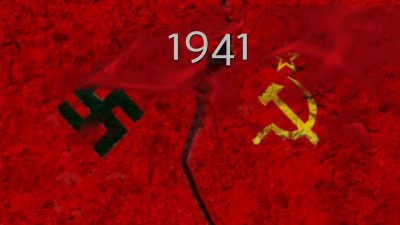
On 8 September 1941, Leningrad ( today’s St. Petersburg) was surrounded by 31 German Divisions and their Finnish allies. The siege lasted 900 days until 27 January 1944, and cost the city terrible suffering and over 1.5 million deaths.
On 2 December 1941, German units occupied the village of Krasnaja Poljana, only thirty kilometres from the Kremlin.
In May 1942, German troops attacked Stalingrad ( today’s Volgograd), a major industrial centre and transportation hub on the Volga River.
Heavy German bombing and street-to-street fighting reduced the city to a mass of ruins.
A few Red Army units and partisans put up a desperate resistance.
That allowed the Red Army to reorganise its forces and encircle the German 6th Army, which was bogged down in the city.
.

The Soviet victory in the Battle of Stalingrad had a devastating effect on Nazi Germany and its allies, marking a radical turning point in the Second World War.
German troops begin to retreat westwards and surrender.
For the final offensive on the capital of the Third Reich, Berlin, the Soviet command concentrated over two and a half million Red Army soldiers. Every street is turned into a defensive line by the Nazis, full of barricades, trenches and machine-gun nests. More than 75,000 Soviet soldiers died in the battle to conquer Berlin.
The price paid by the Soviet Union in the war against Nazi-fascism was very high: about 27 million dead, more than half of them civilians, corresponding to 15 % of the population, compared to 0.3 % in the entire Second World War; about 5 million deported to Germany; more than 1,700 large towns and 70,000 small villages devastated; 30,000 factories destroyed.
Comment on Global Research Articles on our Facebook page
Become a Member of Global Research
Source link

